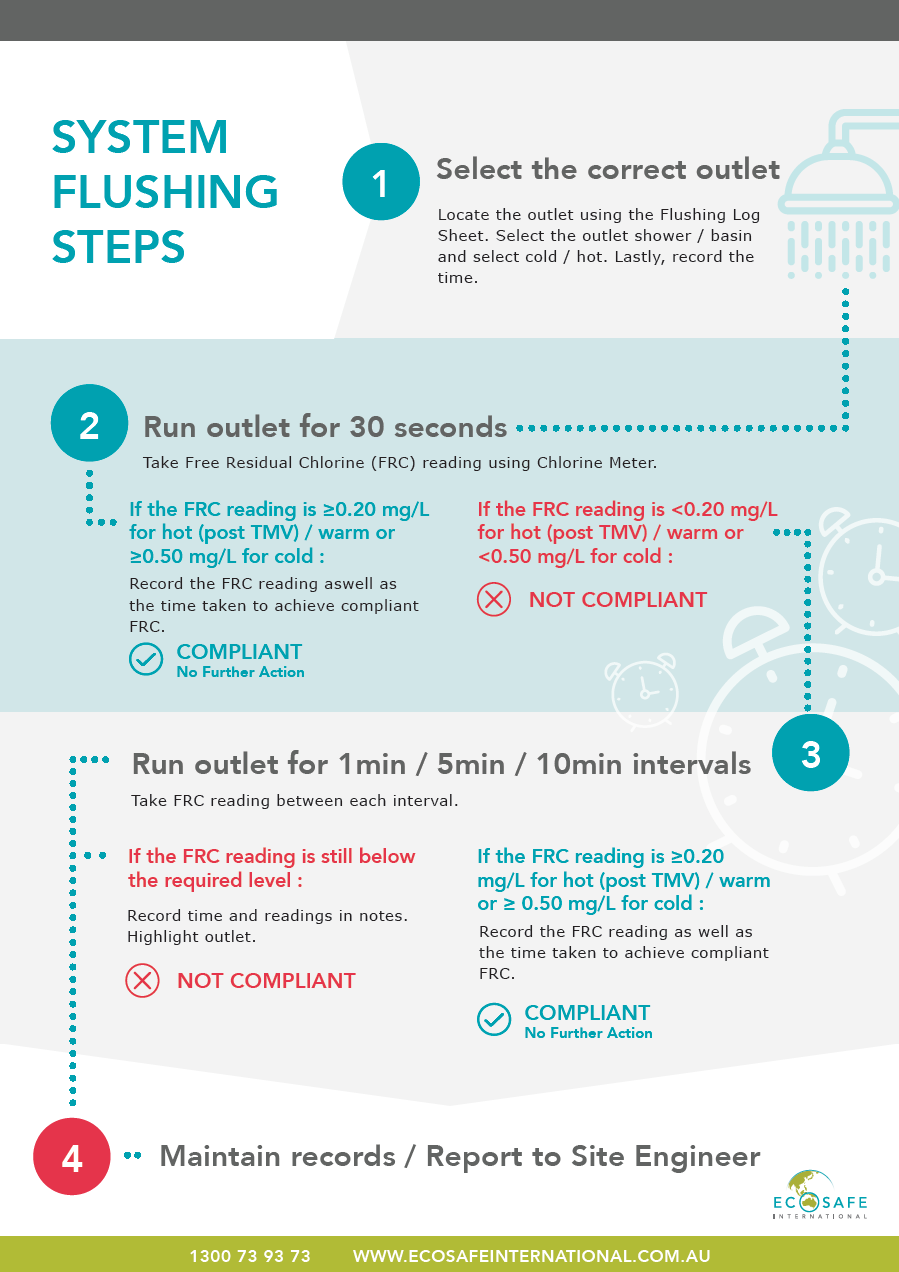The presence of free chlorine residual within a drinking water reticulation system provides evidence of initial disinfection and protection against microbiological recontamination from backflow, pipeline breaks or other causes. The amount of chlorine required varies, depending on the quality of the makeup water and other factors [Australian Drinking Water Guidelines (ADWG) 2011]. The maintenance of suitable free chlorine residual within a drinking water system is considered central to the supply of suitable quality drinking water. A free chlorine residual of between 0.50 – 1.00 mg/L is typically advocated (with 0.60 mg/L being regarded as the upper aesthetic threshold) by the ADWG 2011. However, microbiological water quality must not be compromised to meet aesthetic limits.

Selection of Sampling Points
When selecting sampling points within the drinking water reticulation system, the following factors should be considered:
- The distribution of sampling points throughout the system, including the extremities (sentinel points), must reflect the number of people and associated potential for exposure within the different parts of the system.
- Water quality in an area can be affected by the specific conditions within that area (e.g. low turnover) and hence may require multiple monitoring points within larger reticulation systems.
- If a water storage tank (WST) has no sampling tap, it is preferable to install one. If this is not possible, a sampling point should be located sufficiently close to the WST to represent the water quality within or leaving the tank.
- Ease of access to the sampling points / locations should also be considered, especially when undertaking frequent routine sampling.
- All sampling locations should be clearly identifiable and have a unique site code to enable comparative samples to be taken at a later stage.
- Routine samples should be taken from a number of dedicated or fixed sampling points that are spread across the reticulation network. The spread of these fixed points should be such that all parts of the system are represented.
- Action should be taken to avoid sampling bias within the program by including the use of fixed points (allows for trend analysis over time), the inclusion of sample points across the reticulation network (allows spatial distribution) as well as the inclusion of random locations tested on a rotational basis to assist with ensuring that sampling results are representative of the quality of the water being supplied to consumers.
Interpretation of Results
Prior to interpreting the results it must be emphasised that any “once off” water quality sampling exercise should not be regarded as conclusive and should rather be likened to taking a photo of the sampled volume of water at the specific time of sampling.
For ease of reference the drinking water guideline values for free chlorine residual [as extracted and adapted from the ADWG (2011)] have been outlined below.

It should be highlighted that free chlorine residual is a useful operational monitoring tool and the results should be trended (recommend weekly) in order to obtain a sound understanding of the system. Trending of results not only allows for proactive decision making, but also provides the basis for any justification surrounding the frequency of testing and dosing.
Results Reporting
It is essential to ensure that all drinking water monitoring results are reviewed by a competent person and where unfavourable / ‘out of specification’ results are obtained, the required remedial actions implemented as soon as possible.
To ensure effective result interpretation:
- An overall responsible person together with deputies should be appointed
- Incident Response Protocols (IRPs) should be in place for all potential events / incidents
- All free chlorine residual results should be trended
- Copies of all free chlorine residual results should be filed / referenced within a centralised Water Quality Logbook, or cloud-based compliance tool (such as Do Diligence).
For more information or advice please feel free to contact us for more information.
